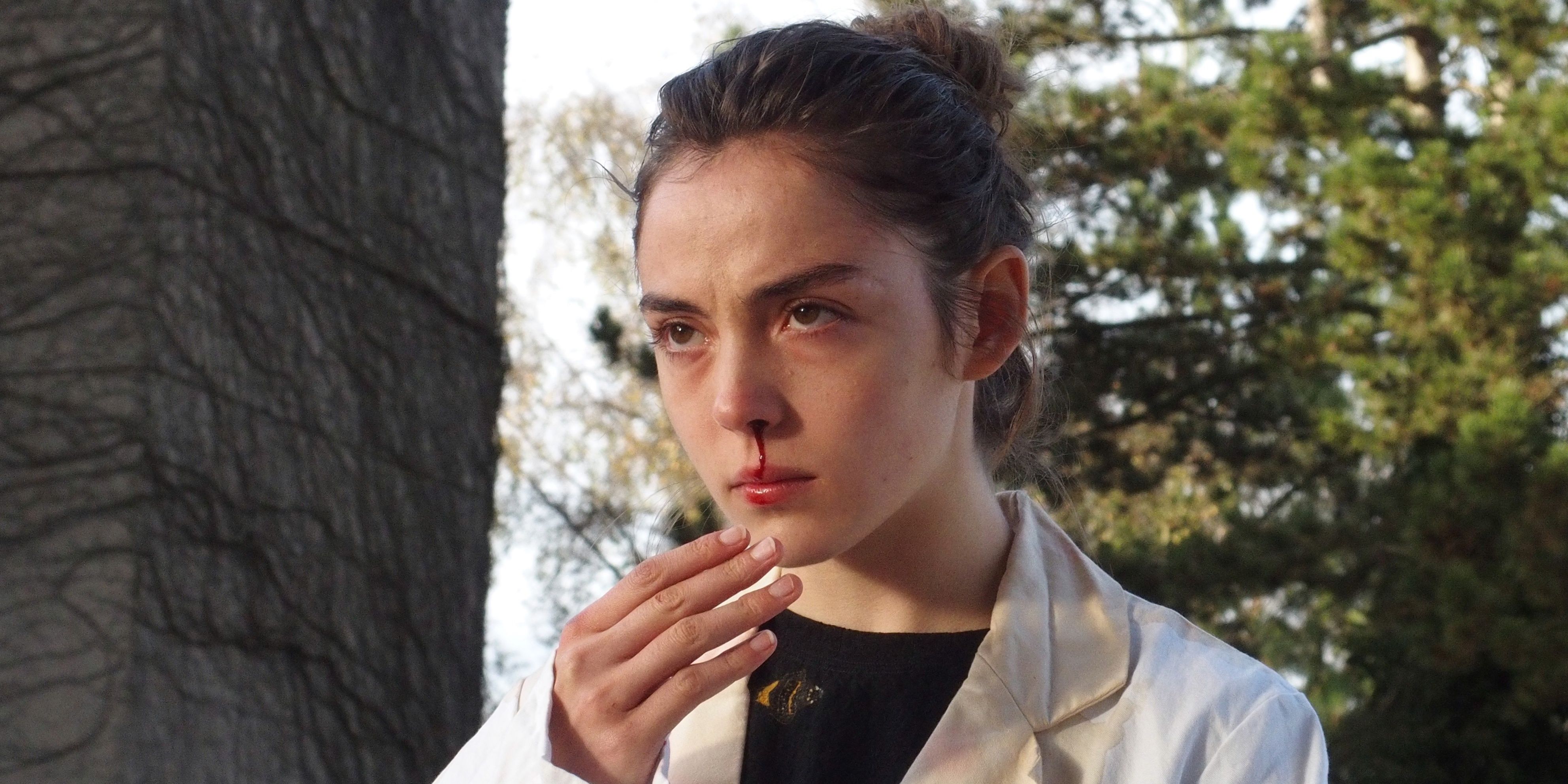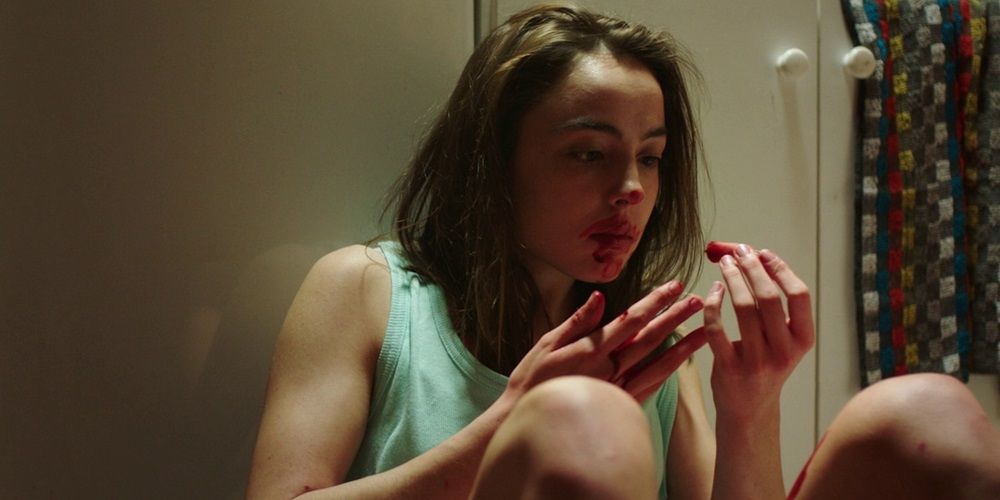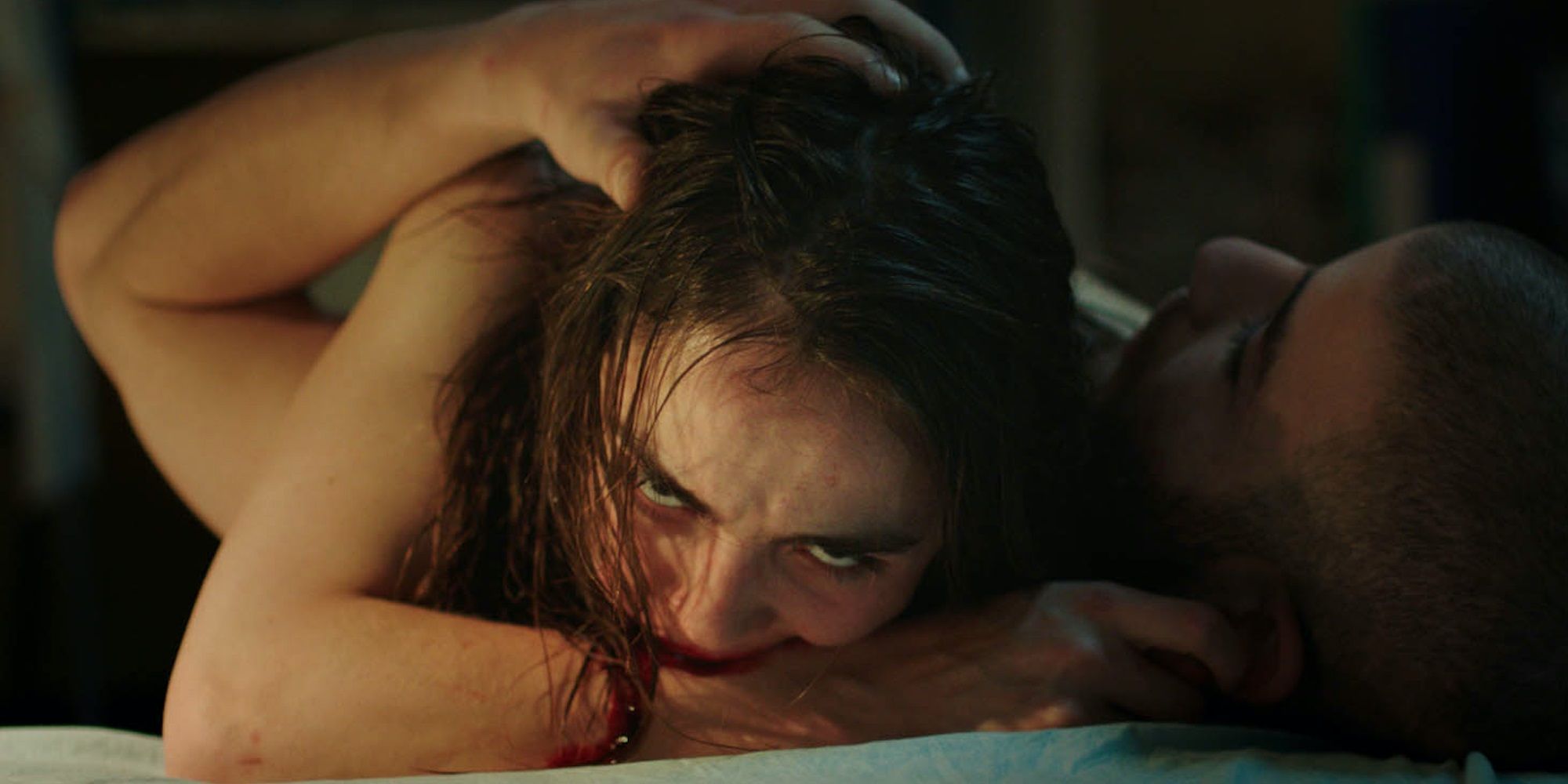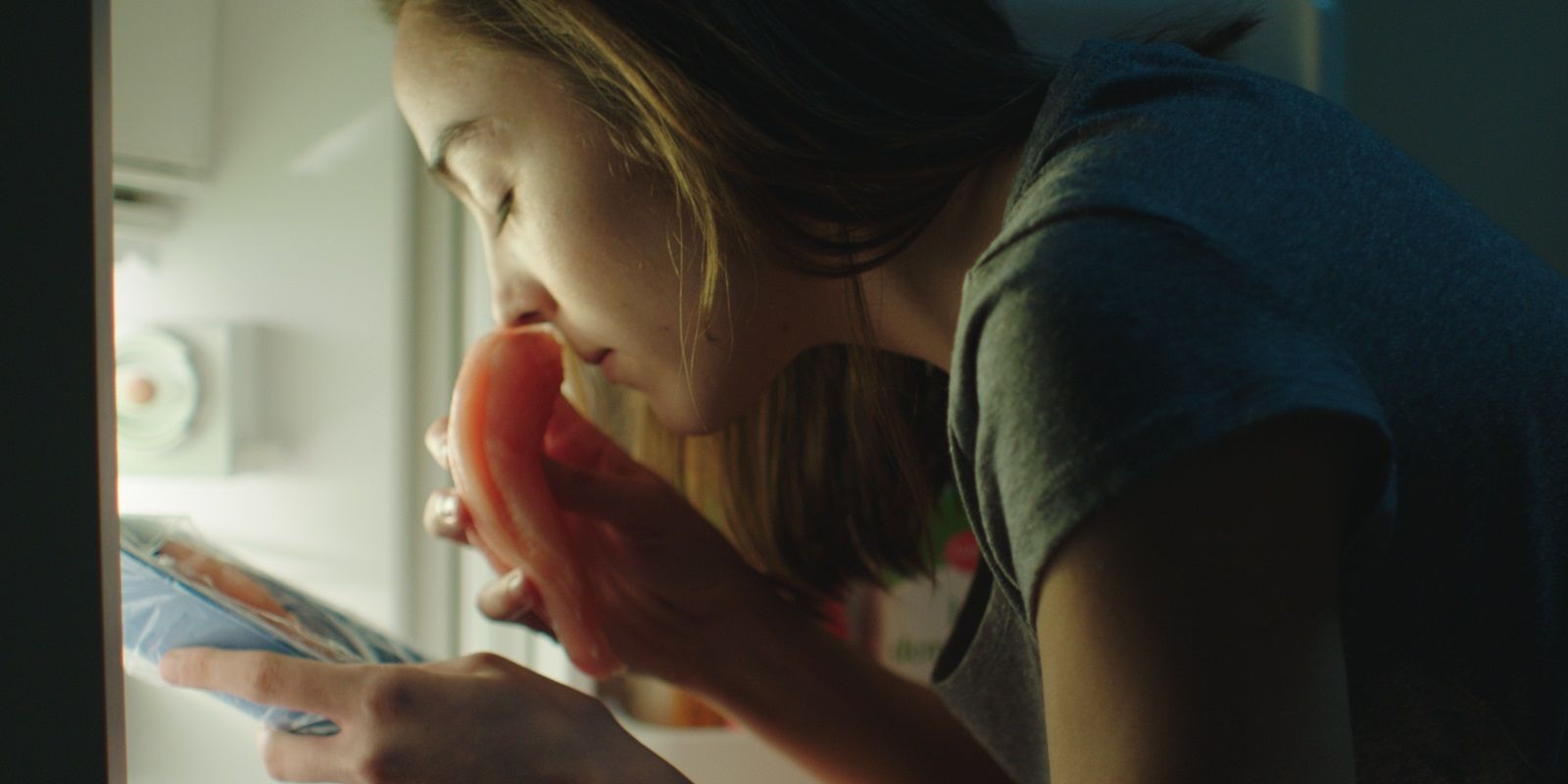Julia Ducournau’s latest body-horror opus, the unsettling carsploitation gem Titane, solidified her place as one of the most exciting voices in horror cinema. The movie won the Palme d’Or at the 2021 Cannes Film Festival, making Ducournau the second female director to win the festival’s top prize (and the first to win the award singlehandedly).
While Titane has cemented Ducournau’s reputation as a horror filmmaker, her debut feature put her on the map way back in 2016. Raw stars Garance Marillier as a vegetarian named Justine who goes off to veterinary school and begins to crave the meat of various animals (including humans). The movie uses a dark, gruesome horror story about cannibalism on a college campus to satirize the ritualism of college culture and the misdeeds of the meat industry.
Ducournau kicks off Raw like many coming-of-age movies: Justine’s parents drop her off at college, where she’s excited to discover herself and chase her dreams. But it quickly takes a dark turn as she and the other freshmen are plunged into a sadistic week-long hazing ritual. Ducournau uses extreme examples of hazing to highlight its barbarity. The freshmen are shamed, humiliated, covered in blood, and forced to eat raw rabbit kidneys. After reluctantly renouncing her vegetarianism to eat the kidneys, Justine gradually develops an insatiable craving for flesh.
Boundary-Pushing Gore (Even By Today’s Standards)
After the 2000s-era “torture porn” craze, it might seem unlikely that a horror film’s depiction of gore could still have the ability to shock. The slew of grisly Saw sequels numbed horror audiences to excessive portrayals of blood and guts. But with Raw, Ducournau managed to bring back the shock factor of gore. The movie’s graphic content was highly controversial upon release. When it was screened at the 2016 Toronto International Film Festival, two audience members reportedly fainted and had to be hospitalized.
Ducournau instantly established her directorial voice as uncompromising. Some horror filmmakers keep the terror on the fringes, showing the monster in glimpses and hiding the violence in the corners of the frame, but Ducournau’s style is the complete opposite. A movie like Raw benefits from a “more is more” sensibility as opposed to the horror genre’s standard “less is more” approach. The true horror is Justine’s descent from carnivore-curiousness into full-blown cannibalism. When she tucks into a feast of human flesh, Ducournau’s camera refuses to turn away.
New French Extremity
The blood-soaked terror of Raw earned Ducournau a spot alongside directors like Gaspar Noé and Alexandre Aja in discussions of “New French Extremity.” New French Extremity is a term coined by Artforum’s James Quandt to refer to a 21st-century French film movement seemingly determined to break every remaining cinematic taboo. In the case of Raw, the broken taboo is a surprisingly sympathetic portrait of cannibalism.
While Raw is a masterclass of horror from its startling cold open, as with any great horror movie, there’s a midpoint sequence like Alien’s chestburster or Psycho’s shower murder that kicks the movie into overdrive. Raw’s midpoint twist is as hilarious as it is disturbing. Justine’s sister Alexia is giving her a DIY bikini wax and takes out a long pair of scissors to cut the wax off. A frightened Justine instinctively kicks Alexia, causing her to accidentally cut off her own finger. Alexia passes out from the shock and, in the initial panic, Justine calls for an ambulance to help her. With the ambulance on its way, Justine calms down, takes a few breaths, and then finds the severed finger. She curiously tastes the blood and, before too long, she’s gnawing on her sister’s finger like a chicken wing. Ducournau doesn’t frame this as a cheap horror moment. It’s a long, drawn-out, captivating scene that captures Justine’s dark thought process.
The Best Pro-Vegetarian Horror Movie Since The Texas Chain Saw Massacre
Raw’s use of a cannibalism storyline to satirize the meat industry is reminiscent of Tobe Hooper’s 1974 slasher masterpiece The Texas Chain Saw Massacre. In the opening scenes of Hooper’s classic, it’s established that the Hardestys have profited from slaughterhouses for years. Supply-and-demand for the flesh of sentient beings consistently provided Sally’s family with financial prosperity. On a road trip across Texas, she’s stalked by a family of people-eating psychopaths in an ironic twist of fate. The best way to make meat-eating audiences empathize with the cows and chickens they eat is to put them in their shoes.
In the press, Ducournau’s filmmaking style is defined by blood and guts, but that narrow-minded assessment is a disservice to her abilities as a storyteller. The reality is that her style is defined by its humanity. Her films explore what it means to be human through the lens of grisly horror. Like all the best horror directors, Ducournau tells audiences that the scariest monster is the one within ourselves.







